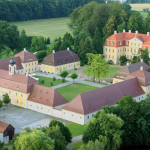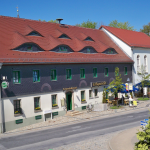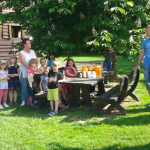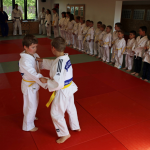Rammenau, Saxony, Germany
The municipality Rammenau with its 1.438 inhabitants is located in the center of the Oberlausitzer region. The village is 790 years old and has historic building substance, including on of the most beautiful castles of Saxony in which the philosopher Johann Gottlieb Fichte was born as well as a scenic landscape shaped by agriculture and forestry. The village is well connected to centers like Bautzen or Dresden.
After the overturn, Rammenau exemplarily began its renewal process. The town council created a development concept in collaboration with all social and economic groups. Its goal is to form the village as an attractive working and living space with its own culture and touristic profile.
Structural as well as socio-ecological renewal of the village core meant the first measure of this process: old, historic building substance was restored and repurposed. A good example would be the old blacksmith that became a multi-functional building with a library, village museum, touristic blacksmith and places of meeting for associations.
The municipality is well aware of its touristic potentials and knows how to use it, mainly because of the numerous cooperations that were created. Particularly noteworthy in this context is the collaboration regarding the baroque castle as a Fichte-landmark with its rich cultural possibilities. Along with the revitalised building substance and the attractive cultural landscape, these efforts lead to a continuous increase in the number of tourists over the last 20 years. As a result, the number of jobs within the tourism industry, the quality of infrastructural equipment and the attractiveness of the living space in general was improved.
Intense measures were undertaken in Rammenau in order to strengthen the economy outside of tourism as well. On the one hand, this included active support of the existing businesses within the village core – on the other hand, new industrial areas were designated in order to allow for new settlement of enterprises.
In order to maintain the traditional and rural identity in this economically prospering village, a focus was put on the support of 12 associations with their some 500 members. One was well aware that these associations actively affect social life and create a variety of leisure possibilities for all generations. This vivid club life and the broad infrastructural spectrum played their part in making the municipality an attractive living space for younger generations again.
Rammenau succeeded to exemplarily handle the transformation process from an exclusively agricultural village to an economic and touristic destination with high quality of life. This was done by focussing on cooperation among citizens, associations and economy as well as transregional collaboration within Westlausitz. At the same time, the social solidarity and the village identity were successfully maintained.
Evaluated: 2016







